SALVIA DISPLAY GARDEN
SALVIA DISPLAY GARDEN
SALVIA DISPLAY GARDEN
SALVIA DISPLAY GARDEN
Nobelius Story
New Salvias are appearing regularly through out the year here in Victoria as well as filtering down from QLD and NSW.Seedlings are found in gardens that are worth considering – only when they are sufficiently different from existing Salvias.Seed is raised from overseas growers, bringing in new species and varieties


Nobelius Display Garden
For those who don’t know where or what Nobelius is: our Display Garden is part of Nobelius Heritage Park, on the old Nobelius Nursery site. This wonderful site is situated in Emerald, near the Emerald Lake, underneath the Nobelius Packing Shed Ave on the Puffing Billy Railway Line. Before we began at this present site, we had a lovely small plot just below the Emerald Museum.

In the beginning
Before we began at this present site, we had a lovely small plot just below the Emerald Museum. This was the initial Study plot to gauge how the various Salvias grew under these conditions. This area was chosen by Ray Boatman ( the instigator of the Study group) with the help of Russ Gyberg, the curator of the Museum. It wasn’t long before we outgrew this small plot.

The original Salvia garden below the Museum
The present display garden was the result of the Group having too many Salvias and not enough room to display them properly to their best advantage. So the hunt was on to find a more suitable location. This was found in Sept 2006 with the help of the Management of Nobelius who are the custodians of the Heritage Park and the Shire Council who allocated another plot for us to develop. A fantastic area was found underneath the Packing Shed, which was under utilized. It was perfect for our purpose, it has a gentle downward slope towards Emerald Lake and Puffing Billy going past at the top, it is an open area free from trees and their roots, bordered by Flowering Cherries on one side and Pin Oaks on the other, all in all an area of approx. 40m x 14m, perfect for the growing of Salvias.
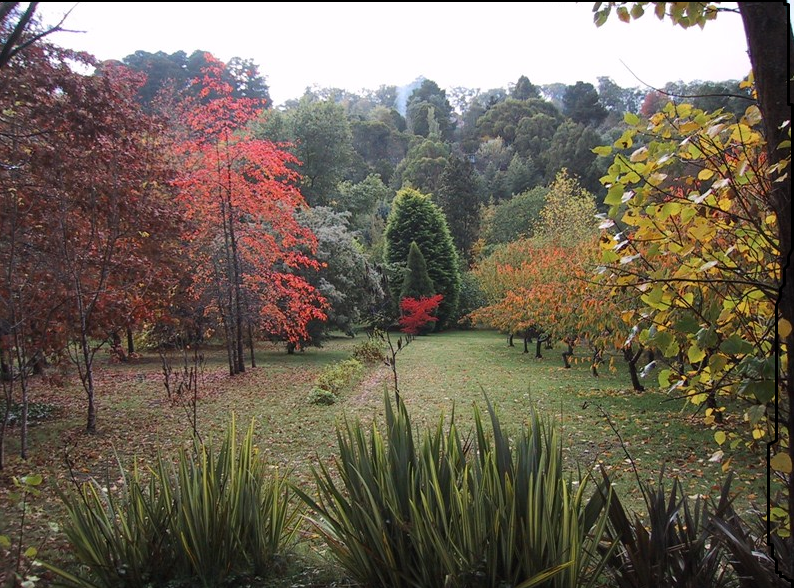
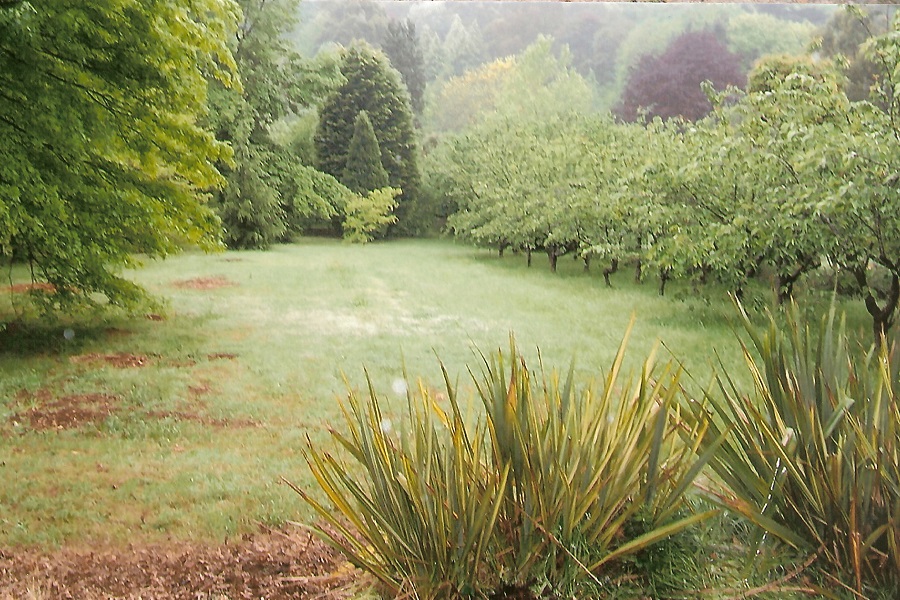
Selecting the area began in 2007. Before the end of the year, we had the area rotary hoed 3 times, ready for the loads of compost and mulch that were dumped, waiting to be spread and raked. Most of the hard work began in Feb 2007 ( it was the beginning of hot dry horrible summers if you’ll remember), but with a great band of helpers we laid out the beds, these being in the form of a central path and a number of paths going off to the sides. Our band of helpers then raked Richie Nottage compost and the chipped mulch for the top. When the internal edging had been completed and the Coldstream toppings had been laid, the garden beds looked wonderful, just waiting to be planted.
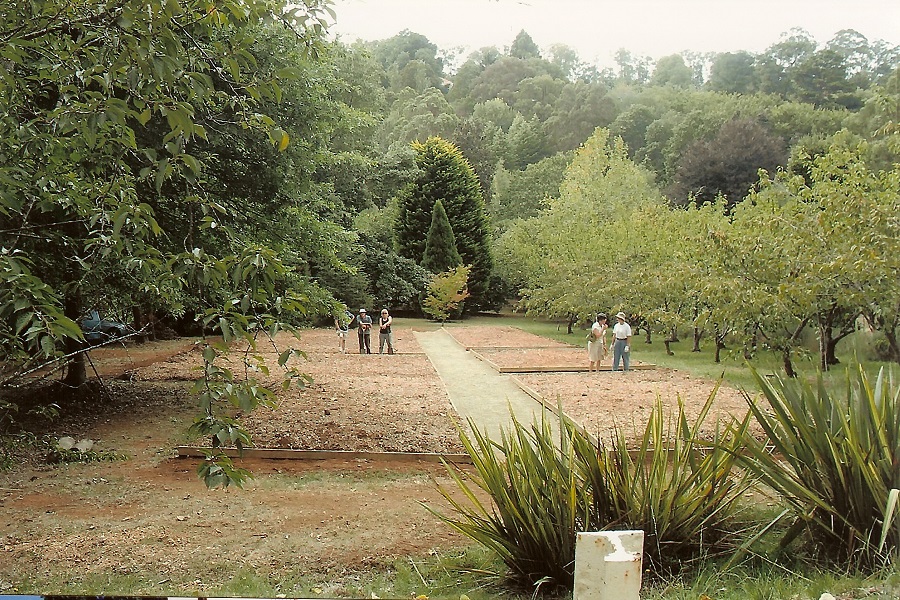


NOBELIUS DISPLAY GARDEN
Memories of a person visiting Nobelius



My first real visit was on a sunny warm afternoon after a series of sunny warm dry days and just before a run of very hot weather. I knew the salvias hadn’t been watered since planting and there had been little rain. The plot is orientated North South down a slope and is overlooked by the Puffing Billy Shed. People passing by were very warm in praise of the garden and I was just amazed at its beauty. It reminds me of an embroidered silk carpet. It is rather formal and skillfully planted. I saw it as a whole work of art and then began to see the individual treasures that made it so and began to realize what talented people created it. We are so lucky to be a group that is not only hard working but so creative. This garden is a reference ‘book’ to demonstrate salvias; not only their worth as beauty in the garden but their growth habits and the hardiness of individual forms and colour wise ‘what goes with what’.



The background of the Eastern border is tall old flowering cherry trees and the Western border has a background of oak trees. Tall strong big leafed salvias are planted at the back of the borders. Old plants shifted from the original garden were thriving. Seeing a large garden planted with Salvia plants from all over the world is such a unique opportunity for study.
Trudi Fry


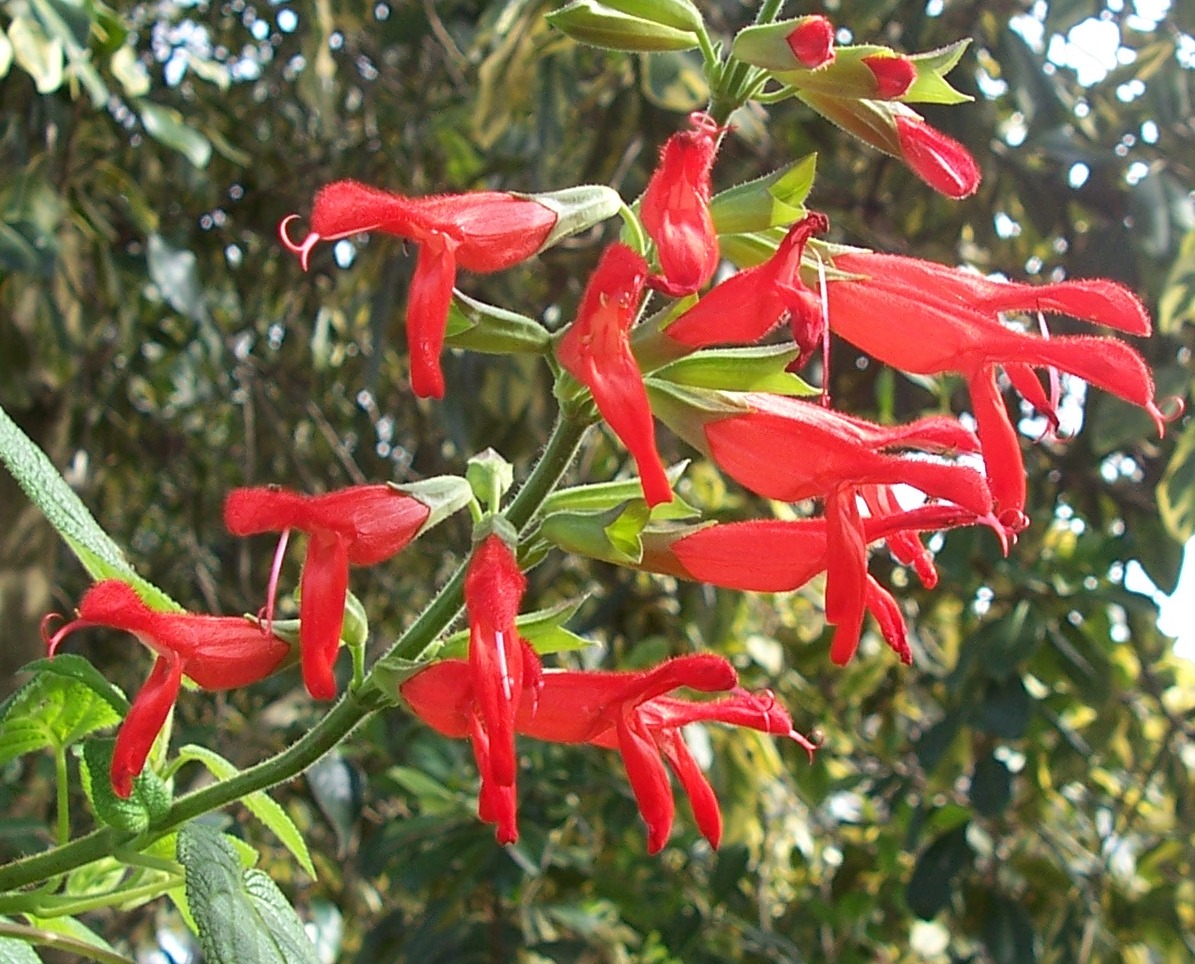
Planting at Nobelius
There have been progress reports on the various plantings at the new Nobelius garden starting in early April 2007, June 2007 and again in Nov 2007, then in April 2008 and a further planting in winter of 2008, in the rain!! Other than on these planting days, there has been no watering. So what is the key to the success?



At each planting, Jillian has come along with huge tubs of pre-soaked water crystals (as well as all the other paraphernalia. I don’t know if people realise just how much these activities and the propagation of plants for sale depend on Jillian and Lyndi). A scoop of these has been placed in each well-watered hole prior to planting, and each plant has been well watered before and after planting. And that’s it.
There is plenty of debate about the effectiveness of water crystals but this speaks for itself – together with the deep mountain soil and the local climate at Nobelius. It is certainly a contrast to the thin soil and hot, dry conditions here in Warrandyte.
Pat Anderson

Nobelius Saga
What a wonderful sight met us when we went up for our first Working Bee at Nobelius in late April (2008), so many Salvias were either coming in to bloom or were in full bloom. Although the heat and the long dry delayed and deterred us, it certainly didn’t stop the Salvias from flourishing in this great location.
There were remarkably few loses and a little storm damage, with plants blown over and some almost out of the ground. This was the scene that met Bevan when he went to spray’ The Oxalis’ the week before we went up. But thanks to the great turn out of helpers, it was a case of ‘so many hands make light work’ and in no time many of the blown over plants were neatly tied, pruned and staked, and those not helping with digging holes and planting the lower red bed, were doing some of the other many tasks that always need doing.
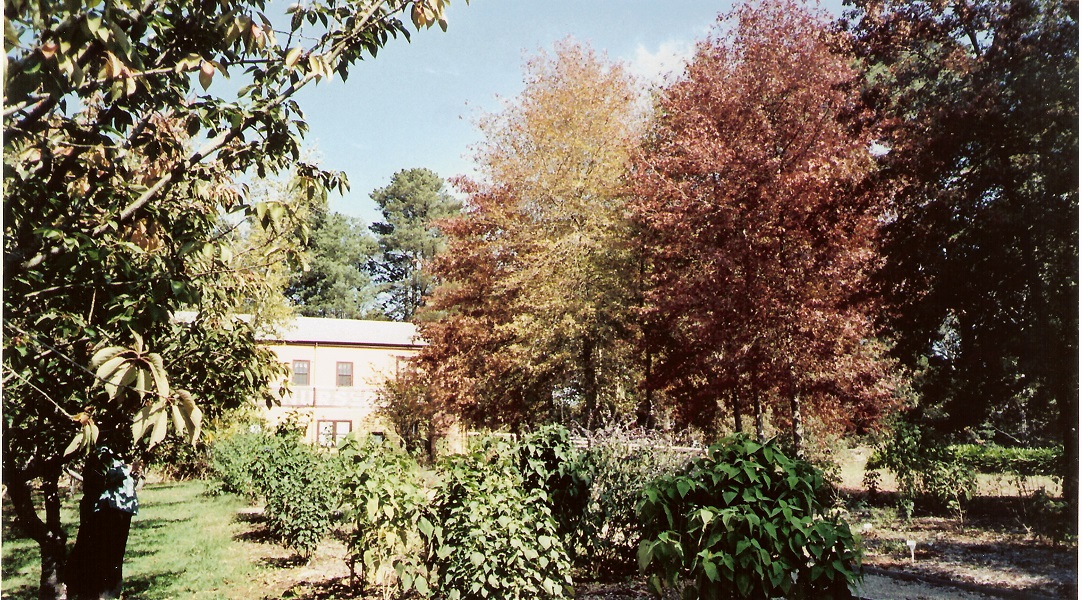

My thanks to Jennifer and Geoff Ellis, Pat Jenson and John Thom, of course myself and Jillian and a few new comers – Meridith Taylor and Debbie Capozzi, and to Bevan for coming up from Sommerville to spray the weeds, so thankyou everyone.
Because we had such a good turn up, it wasn’t long before the planting, watering and other tasks were completed, and we could retire and relax under the Oaks for another of our renowned sumptuous feasts, everyone brought a plate of delicious food, including Jennifer’s ‘shushi’, tea, coffee and water, reclining on rugs in the shade with good company after a couple of hours of hard toil, what else does a person want. With all that completed, we were able to go home nice and early after a good day’s work.


What ‘s left to be done? We still have to constantly prune, to keep many of the smaller plants compact, not allowing them to get too leggy. There is still more spraying of Oxalis to be done. The lower pink bed is the next to be planted and as many of the small plants from the old site have to be relocated, some will be planted, others may be able to be broken up and potted on. All these tasks can be achieved at our next Working Bee in June . So bring a spade, snips, knee pads, plastic bags, a hat or coat and a plate to share and we can all get on with what has to happen.
NOBELIUS SAGA CONTINUED
2009 arrived with very little happening due to the horrible hot weather, we weren’t going to ask anyone to try and work in that heat. When we did venture up to inspect the condition of the garden, we were pleasantly surprised at how well the plants had stood up to all that hot dry weather and had come through with flying colours, especially as no extra water had been applied.. We didn’t loose any plants at all, thanks to a wonderful location, the soil, the microclimate, protection from the tall trees and of course the preparation when planting. Although most of the leaves had dropped from the big leaved Salvias, leaving only sticks, they were not dead, these were pruned down to a good bud, or left if they were showing signs of coming into flower, all unsightly, fallen stems were pruned.

So many of the Salvia greggii’s and microphylla’s were still in full bloom, the hot weather hadn’t fazed at all.All the beds are being systematically pruned now it’s autumn, March/ April 09,all flowers being removed, the smaller Salvias being pruned down to a good leafy bud, to encourage compact growth before the cold weather sets in. The larger Salvias are being pruned for shape and dead wood being removed. Any late flowering Salvias are pruned down for a good shape.With the little rain that we have had, it has been amazing how the Salvias have sprung back to life again. The big ones are either beginning to flower or are in full bud, many of the smaller Salvias that had been pruned at the beginning are flourishing and beginning to flower again.This autumn and winter will be a wonderful sight from Puffing Billy with a riot of colour in our Display Garden.
We are continually planting those bare spaces, pruning and mulching, when most of the hard work is completed, the Group plans to hold an open day in November in the Packing shed, where you can view the whole garden. We hope you will join us on that wonderful occasion.



More of the Nobelius Saga
The new year opened up to be bright, sunny and full of promise after all the work that was put in to get it ready for the open day, November 09. Of course when coming back to the garden, there is a mountain of work to be done, such as pruning and weeding. In fact that’s all we seem to have been doing all year is pruning and the weeds were surprisingly few as compared to previous years. Well as we all know, we have had lots and lots of rain!!! and most Salvias have benefited from that soaking rain that has allowed them to burst forth into leaf and flowers, and of course with all that growth , all the Salvias have to be pruned down to make each plant sustainable.
Autumn saw us start the winter pruning of the small Salvias, ( pruning back to good buds), to get them to put on new compact growth before the cold winter winds come – for most we were successful.

The Autumn flowering began with S. mexicana ‘Limelight’, involucrata (tall), ‘Pink Icicles’, ‘Romantic Rose’ and many other beautiful Autumn/ Winter flowering Salvias to follow.
The Winter unfortunately proved to be very cold and was too cold for some. We found that quite a few large leaf Salvias lost their leaves and became dormant, amongst others were ‘Black Knight’, the mexicana varieties, tubiflora, ’Purple Majesty’, ‘Violet Eyes’. These we didn’t touch at all, they were just a bunch of dead sticks standing there looking very unsightly – we were tempted many times to take them down, but we just bit our lips and left them. Most of these either didn’t come back again or took along time to put out new shoots.
It may be that these varieties may have to be replace regularly every 2 yrs, or they may need to be more sheltered by other plants around them. The other disappointing plants were “ Costa Rican Blue’ and ‘Omaha Gold’, they just haven’t got going up there in that microclimate – we only have 1 good plant of ‘Costa Rican Blue’, the others are slow, sickly, so we have planted better plants beside them, hoping that they put on good new growth, especially with all that rain we’ve just had.
This rain has given some Salvias that were on their death bed (due to a lack of water) a new breath of life, they are producing new leaf growth and copious amounts of flowers.
I’m please to note that most if not all the herbaceous Salvias have come up and responded to all this moisture with great growth and good flower stems.
Unfortunately when we were putting in our beautiful new labels, many of the old labels were pulled out, without a little push in label next to the plant, so that when we took out all the labels, we didn’t know what some of the Salvias were – it has taken a lot of investigating to correctly identify some of those herbaceous Salvias.
By getting Lambley Nursery to send a few photo’s and descriptions over, we have been able to find out what we do have and what we don’t have. The oxalis has been rampant this year as we haven’t had the people power to help spread mulch thickly enough to stop the Oxalis from coming up, so next year we will spend a lot of time proximity to the plants getting rid of those oxalis bulbs.
I know that we could spray or use a few remedies, but when the oxalis is coming up in the middle or very close to the plant that you don’t want to take chances, but rather hand weed around the problem.